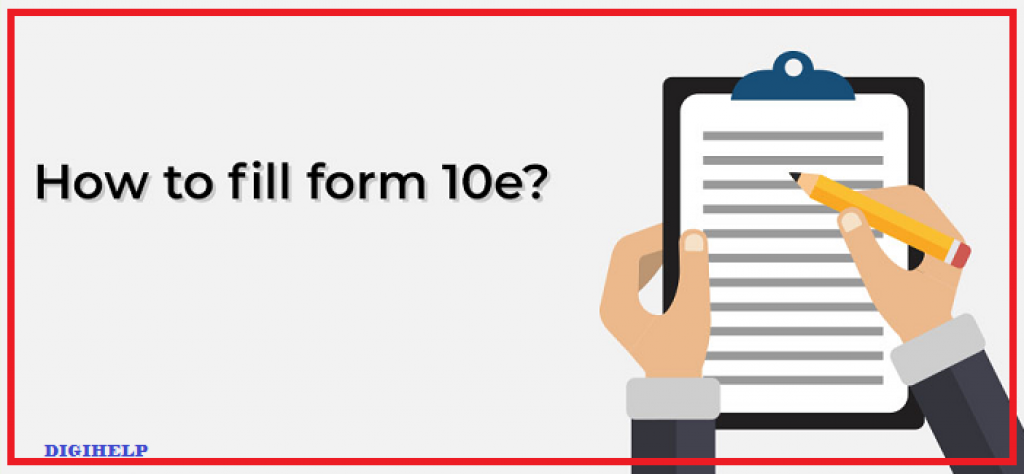How to File Form 10E – Steps to File Form 10E for Tax Relief on Salary Arrears – As a salaried individual, if you receive any advance salary or arrears, you may have to pay taxes on the total amount received. The Income Tax Department, however, protects you from any additional tax liability due to any delay in receiving income under Section 89(1). In other words, if you receive any portion of your salary in the form of arrears, you can claim tax saving under Section 89(1) on the same via Form 10E filing.
Under Section 89(1), you can avail of tax relief through recalculation of tax for both years (in which the arrears are received and the arrears pertain). The tax liability is adjusted after assuming that the arrears were received in the same year they were due.
What is Tax Relief under Section 89(1)?
Key Highlights :
As a taxpayer, the following types of arrears received are taxable in the same year they are received –
- Salary Arrears
- Advance salary
- Family pension arrears
- Commuted pension
Any Compensation received from your employer for termination of employment Gratuity. You can, however, reduce the additional tax liability due to any delays in receiving such income under Section 89(1).
Also Read – How to file Form 10E For Arrears Tax Relief ? Download
What is Form 10E?
It is mandatory to fill out Form 10E if you want to claim tax relief under Section 89(1) of the Income Tax Act 1961. Under Section 89(1) of the Act, you are eligible to claim tax relief for delayed salary received in the form of arrears. Any arrears received are reflected in Part B of your Form 16.
Form 10E is required for furnishing particulars of received income under Section 192(2A) and can be filed by a Government servant or any employee working in a company, co-operative society, university, local authority, institution, association, or body.
How to File Form 10E?
The following steps explain the process of filing the Form 10E –
- Log into your Income Tax e-filing account
- Go to e-File and then Income Tax Forms
- Select ‘FORM NO. 10E – Form for relief u/s 89’ under ‘Form Name.’
- Select the Assessment Year (or AY) for which you need to file Form 10E (for example, select Assessment Year as 2019-20, if the arrears of salary you have received are for the Financial Year 2018-19 (or Assessment Year 2019-20)
- Select the Submission mode and click on ‘Continue.’
- Fill out the applicable details and click on the ‘Save Draft’ button
- For the Arrears of Salary, please select Annexure-I* and fill out the details as applicable
- Click on ‘Preview & Submit’ to review the details and then submit the Form
* Please note that the following Annexures are available under the page menu –
- Annexure-I: For Arrears or Advance Salary
- Annexure-II: For Gratuity (Past services over five years but less than 15 years)
- Annexure-IIA: For Gratuity (Past services for 15 years or more)
- Annexure-III: For Compensation on Termination of employment
- Annexure-IV: For Commutation of Pension
- Important Things to Consider While Filing Form 10E
Consider the following aspects while filling out form 10E for claiming tax relief on salary arrears –
- You must file Form 10E online on the Income Tax Department website or click here
- If you had claimed tax relief in the previous financial year but did not file Form 10E, you would receive a notice from the Income Tax Department for non-compliance
- You must file Form 10E online before filing your income tax return
- While arrears on salary may pertain to earlier financial years, you must choose the Assessment Year in which you have received the arrears while filling out Form 10E.
- You do not need to attach any copy of the Form 10E submitted with your income tax return (keep a copy, however, for your record)
- While your employer may ask for the confirmation, once you have submitted Form 10E, however, it is not mandatory to provide this Form to your employer
- Tax relief under Section 89(1) is also applicable for family pension received in arrears
- There is no tax relief under Section 89(1) for VRS (Voluntary Retirement Scheme) compensation if you have previously claimed tax exemption on the same under Section 10(10C)
The steps mentioned above will help you file and submit Form 10E online to claim tax relief under Section 89(1) of the Income Tax Act 1961. Form 10E must be filed if you wish to reduce your tax liability on the salary payments received as arrears. In case you have any issues, concerns, or doubts related to Section 89(1), Form 10E, or tax filing, you must consult an expert to ensure that you file the income tax return correctly without any hassles.
